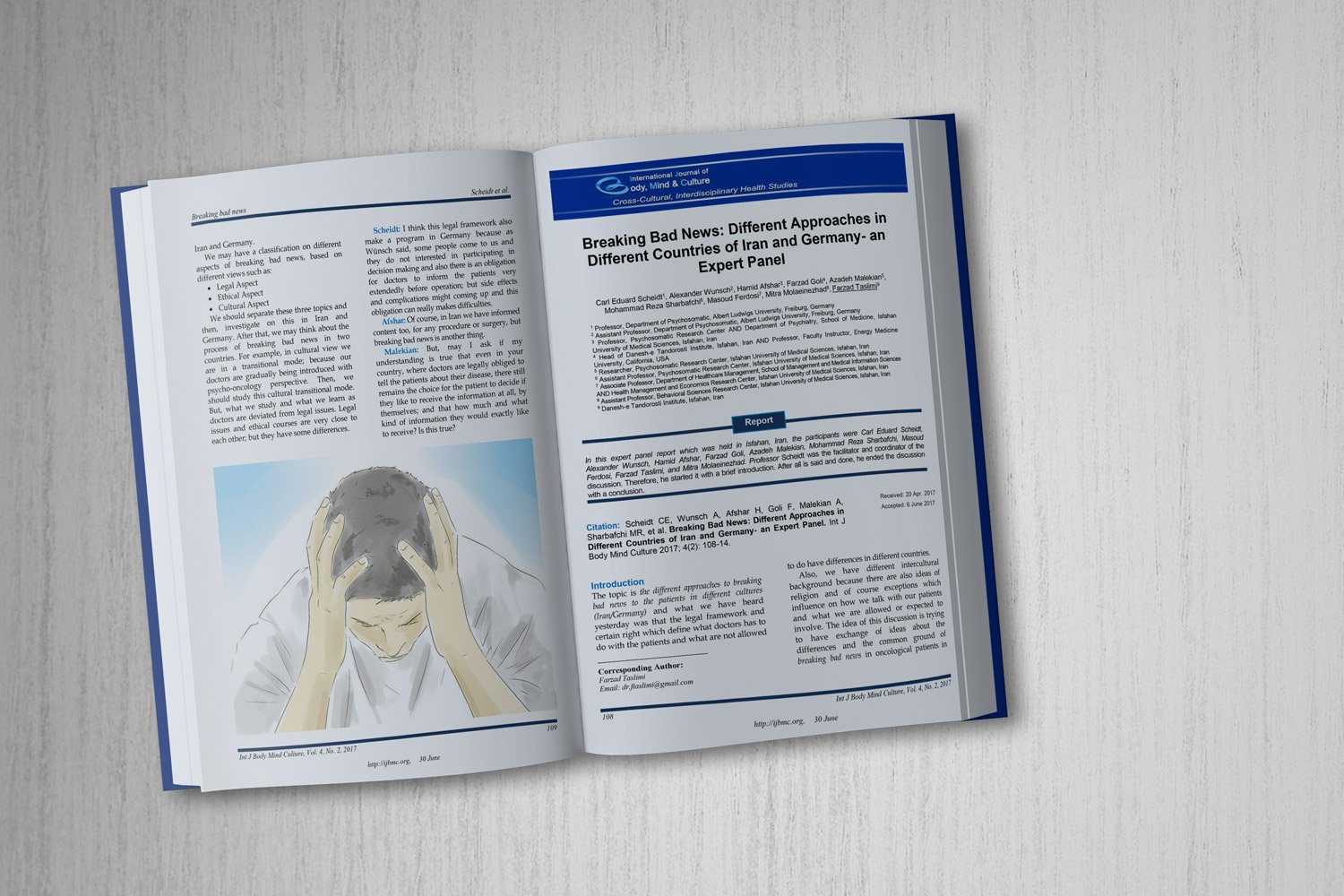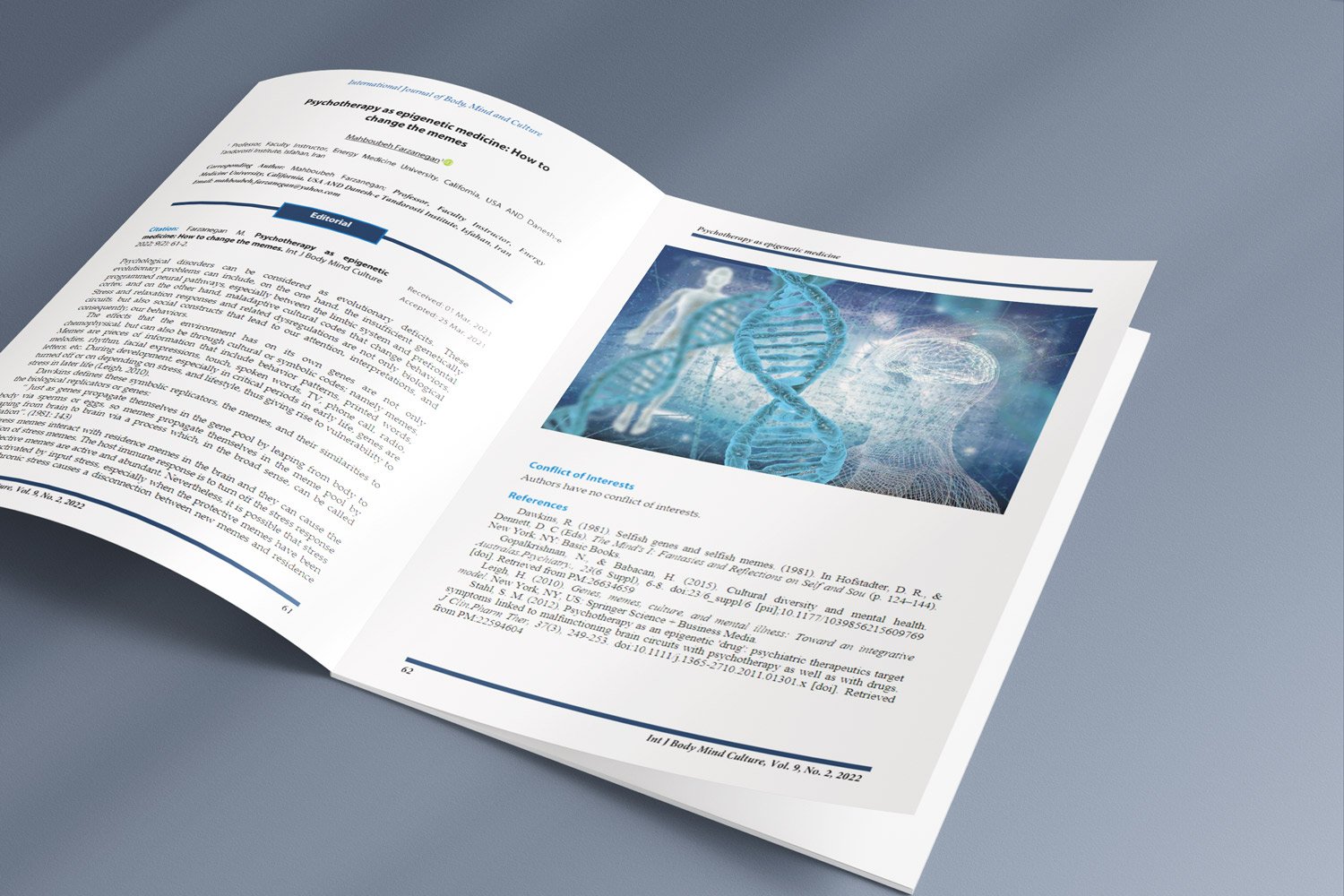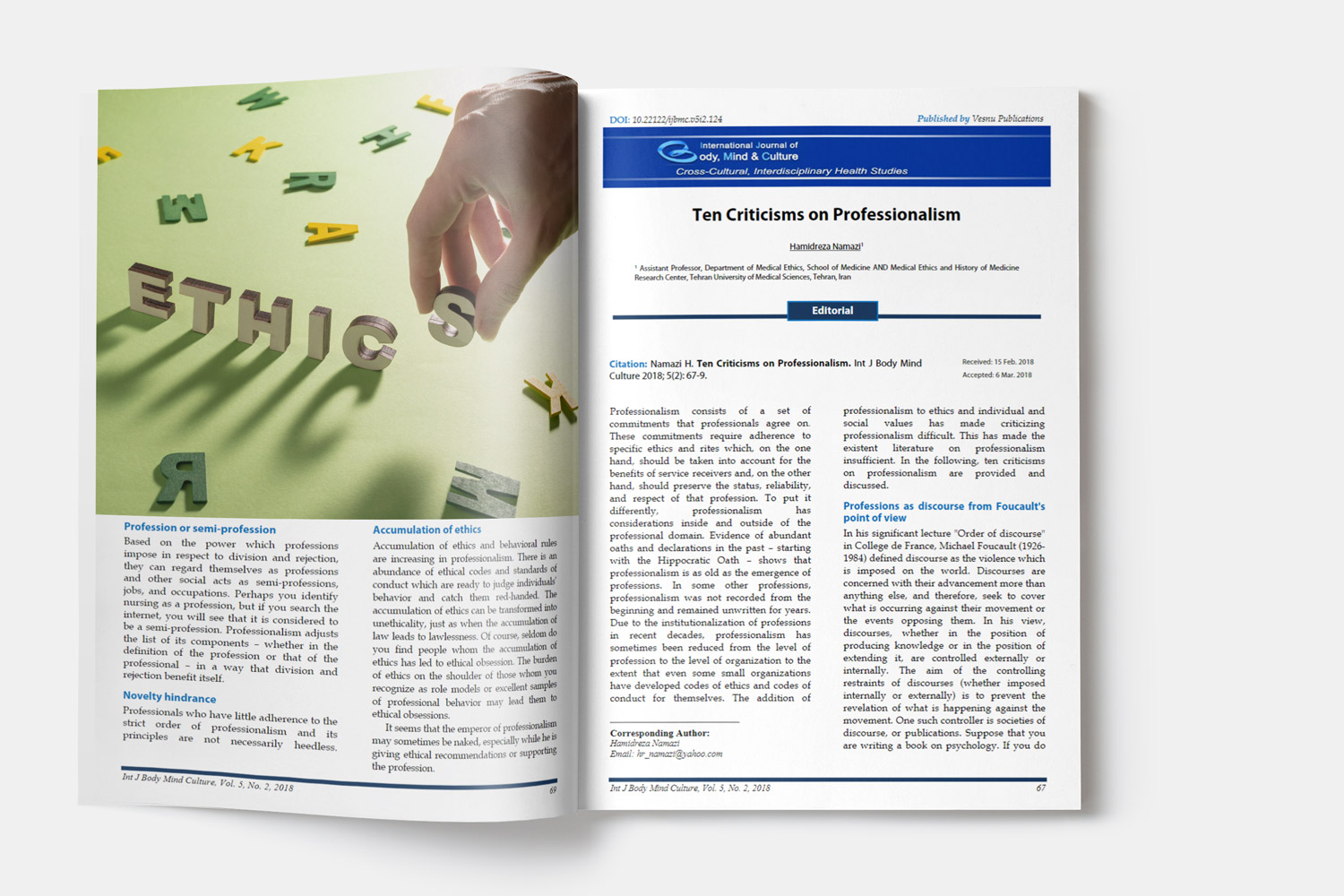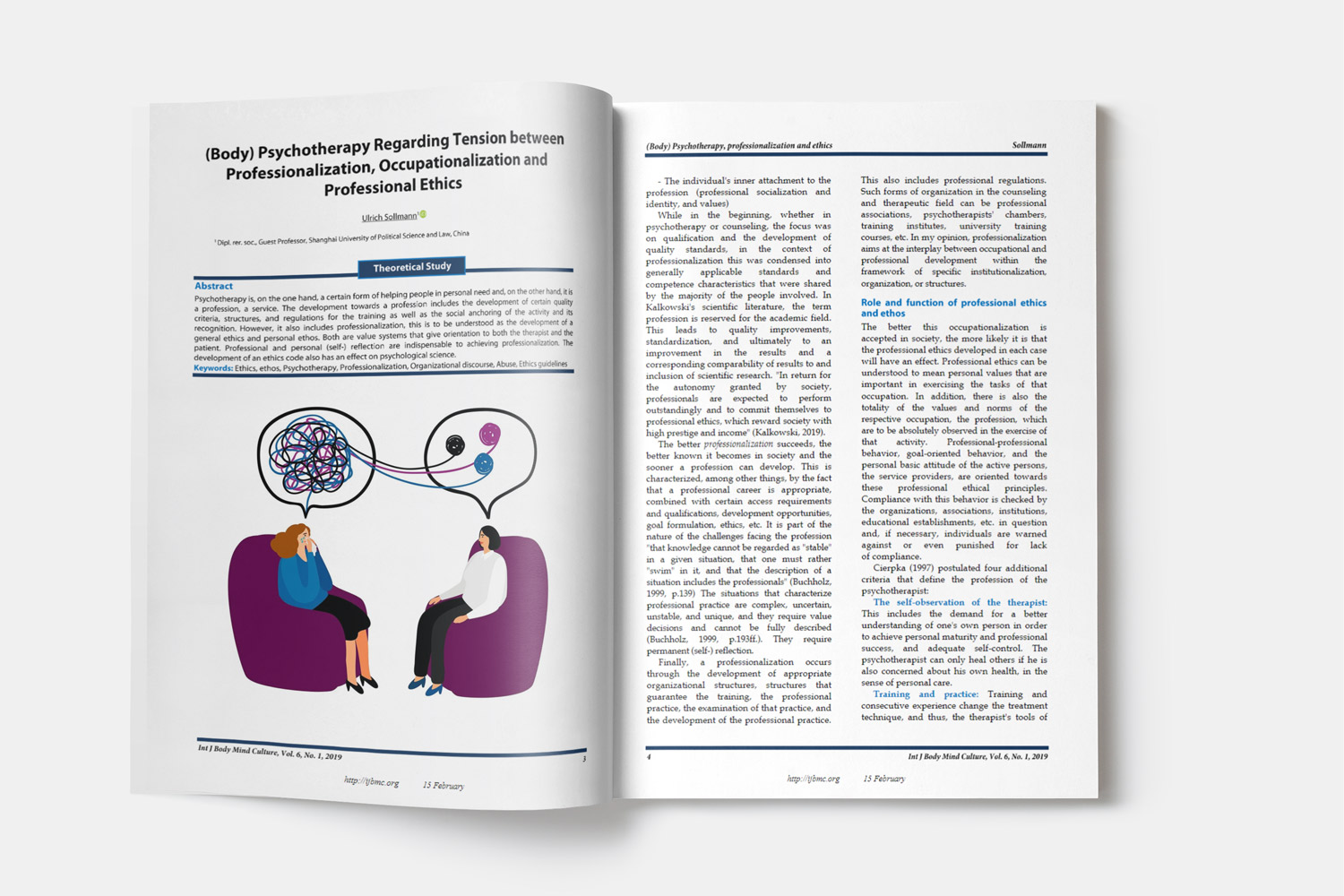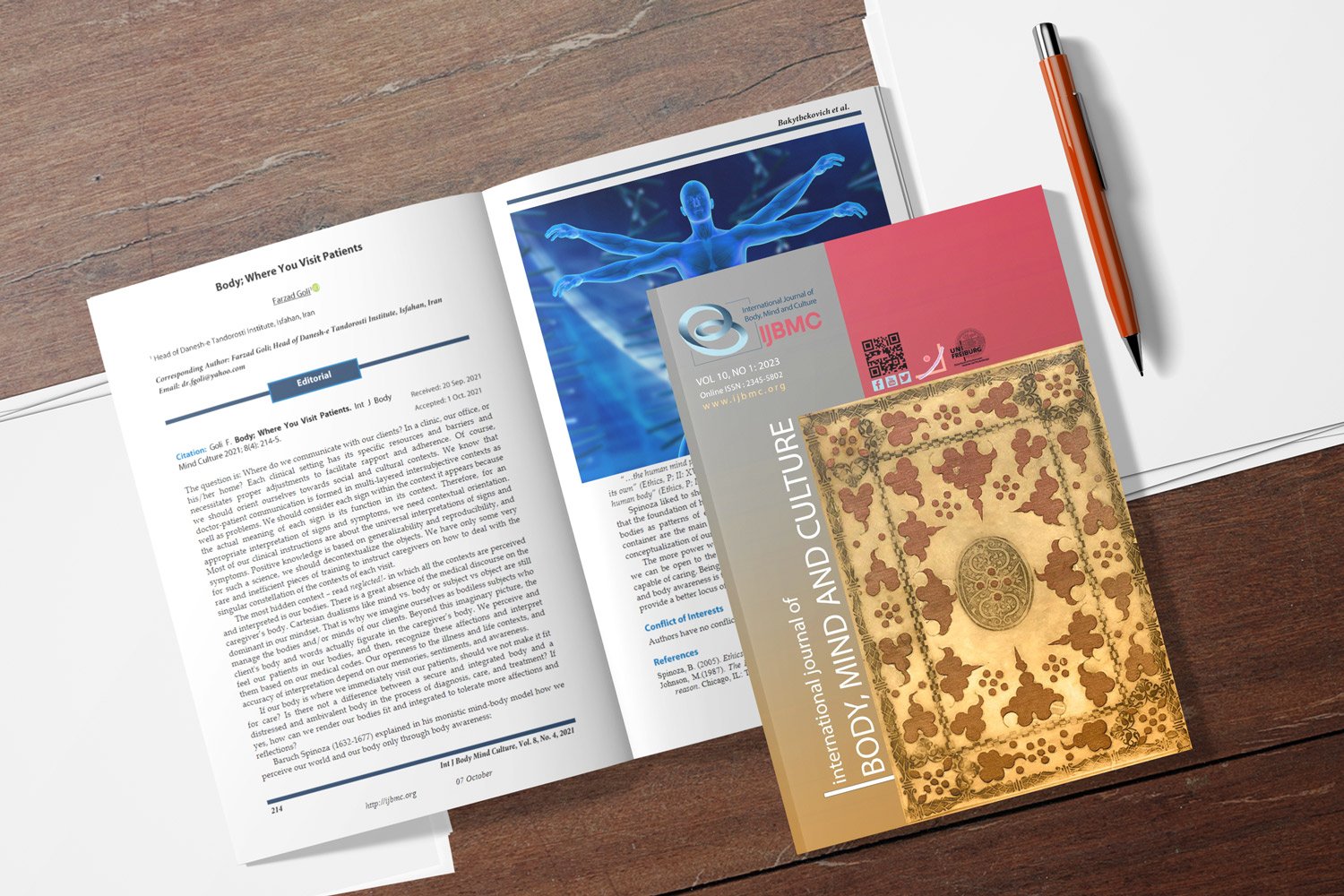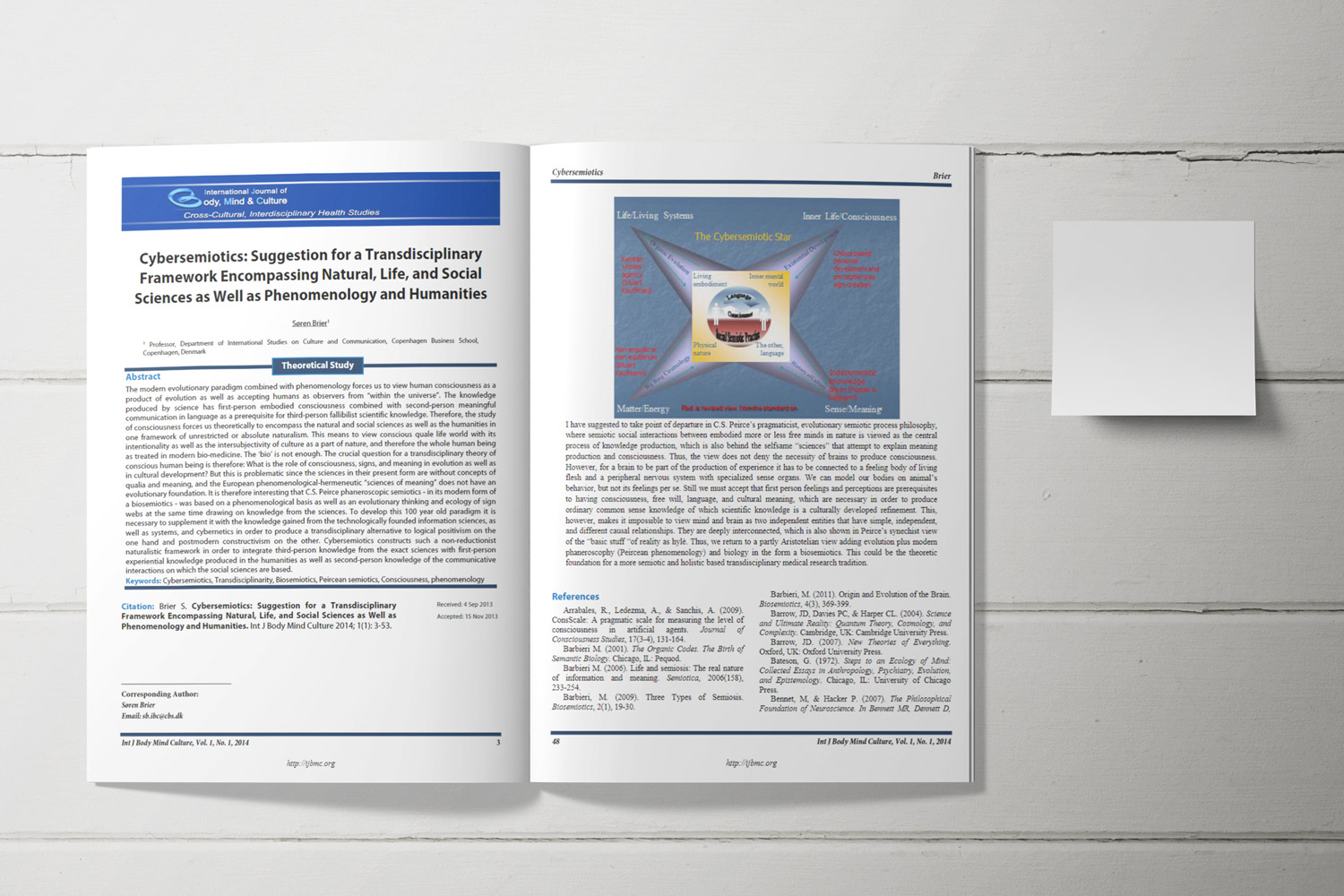Association of Personality Traits with Psychological Factors of Depression, Anxiety, and Psychological Distress: A Community Based Study
Downloads
Abstract
Background: Personality can be defined as the dynamic arrangement of psycho-physical systems. This study was conducted with aim to assess the prevalence of personality traits and their relation with psychological factors in the general population.
Methods: The present research was designed as a cross-sectional study. We extracted our data from the framework of the Study on the Epidemiology of Psychological, Alimentary Health, and Nutrition (SEPAHAN), in 2013. Participants (4763 adults) were selected from among healthy people in 20 counties across Isfahan Province, Iran, through convenience sampling. Personality traits and psychological factors including depression, anxiety, and psychological distress were assessed using the NEO Five‐Factor Inventory (NEO-FFI), Hospital Anxiety and Depression Scale (HADS), and General Health Questionnaire (GHQ). Binary logistic regression analysis was used to
find the association among the personality traits and psychological variables. Odds ratios were reported with the corresponding 95% con;dence intervals.
Results: The mean score ± SD of neuroticism, extraversion, openness, agreeableness, and conscientiousness were 18.72 ± 7.87, 29.03 ± 7.08, 24.04 ± 5.28, 31.05 ± 6.37, and 36.26 ± 7.22, respectively. In depressed and anxious subjects and subjects with high psychological distress, the score of neuroticism was higher, but the scores of other factors were significantly lower (P <0.05). Through multivariate analysis, high levels of neuroticism and low levels of extraversion and agreeableness were associated with being depressed, anxious, or having significantly high psychological distress.
Conclusion: In conclusion, in our population, high levels of neuroticism and low levels of agreeableness and extraversion were associated with being depressed or anxious, or having high psychological distress.
Keywords: Personality, Trait, Depression, Anxiety, Stress
Downloads
References
Adibi, P., Hassanzadeh Keshteli, A., Esmaillzadeh, A., Afshar, H., Roohafza, H., Bagherian-Sararoudi, R. et al. (2012). The study on the epidemiology of psychological, alimentary health and nutrition (SEPAHAN): Overview of methodology. J Res Med Sci, 17(Spec 2), S291-S297.
Bienvenu, O. J., Brown, C., Samuels, J. F., Liang, K. Y., Costa, P. T., Eaton, W. W. et al. (2001). Normal personality traits and comorbidity among phobic, panic and major depressive disorders. Psychiatry Res, 102(1), 73-85. doi:S0165-1781(01)00228-1 [pii]. Retrieved from PM:11368842
Bienvenu, O. J., Samuels, J. F., Costa, P. T., Reti, I. M., Eaton, W. W., & Nestadt, G. (2004). Anxiety and depressive disorders and the five-factor model of personality: a higher- and lower-order personality trait investigation in a community sample. Depress.Anxiety., 20(2), 92-97. doi:10.1002/da.20026 [doi]. Retrieved from PM:15390211
Bjelland, I., Dahl, A. A., Haug, T. T., & Neckelmann, D. (2002). The validity of the Hospital Anxiety and Depression Scale. An updated literature review. J Psychosom.Res, 52(2), 69-77. doi:S0022399901002963 [pii]. Retrieved from PM:11832252
Bogg, T., & Roberts, B. W. (2004). Conscientiousness and health-related behaviors: a meta-analysis of the leading behavioral contributors to mortality. Psychol Bull, 130(6), 887-919. doi:2004-20177-003 [pii];10.1037/0033-2909.130.6.887 [doi]. Retrieved from PM:15535742
Brown, T. A. (2007). Temporal course and structural relationships among dimensions of temperament and DSM-IV anxiety and mood disorder constructs. J Abnorm.Psychol, 116(2), 313-328. doi:2007-06673-009 [pii];10.1037/0021-843X.116.2.313 [doi]. Retrieved from PM:17516764
Brown, T. A., & Barlow, D. H. (2009). A proposal for a dimensional classification system based on the shared features of the DSM-IV anxiety and mood disorders: implications for assessment and treatment. Psychol Assess, 21(3), 256-271. doi:2009-12887-003 [pii];10.1037/0016608 [doi]. Retrieved from PM:19719339
Budaev, S. V. (1999). Sex diferences in the Big Five personality factors: Testing an evolutionary hypothesis. Pers Individ Dif, 26, 801-813.
Chapman, B.P. (2015). Optimizing bandwidth and fidelity on the NEO-FFI: Replicability and reliability of Saucier's item cluster subcomponents. J Pers Assess. [In Press].
Chapman, B., Duberstein, P., & Lyness, J. M. (2007a). Personality traits, education, and health-related quality of life among older adult primary care patients. J Gerontol.B Psychol Sci Soc Sci, 62(6), 343-352. doi:62/6/P343 [pii]. Retrieved from PM:18079419
Chapman, B. P., Lyness, J. M., & Duberstein, P. (2007b). Personality and medical illness burden among older adults in primary care. Psychosom.Med, 69(3), 277-282. doi:PSY.0b013e3180313975 [pii];10.1097/PSY. 0b013e3180313975 [doi]. Retrieved from PM:17401059
Costa, P. T., Terracciano, A., & McCrae, R. R. (2001). Gender differences in personality traits across cultures: robust and surprising findings. J Pers.Soc Psychol, 81(2), 322-331. Retrieved from PM:11519935
Donnellan, M. B., & Lucas, R. E. (2008). Age differences in the Big Five across the life span: evidence from two national samples. Psychol Aging., 23(3), 558-566. doi:2008-13050-007 [pii];10.1037/a0012897 [doi]. Retrieved from PM:18808245
Dugas, M. J., Gagnon, F., Ladouceur, R., & Freeston, M. H. (1998). Generalized anxiety disorder: a preliminary test of a conceptual model. Behav Res Ther, 36(2), 215-226. doi:S0005-7967(97)00070-3 [pii]. Retrieved from PM:9613027
Hayward, R. D., Taylor, W. D., Smoski, M. J., Steffens, D. C., & Payne, M. E. (2013). Association of five-factor model personality domains and facets with presence, onset, and treatment outcomes of major depression in older adults. Am J Geriatr.Psychiatry, 21(1), 88-96. doi:S1064-7481(12)00074-7 [pii];10.1016/j.jagp. 2012.11.012 [doi]. Retrieved from PM:23290206
Kikuchi, Y., Inoue, T., Ito, M., Masuda, M., Yoshimura, K., & Watanabe, S. (1999). Health consciousness of young people in relation to their personality. J Epidemiol, 9(2), 121-131. Retrieved from PM:10337085
Klimstra, T. A., Luyckx, K., Germeijs, V., Meeus, W. H., & Goossens, L. (2012). Personality traits and educational identity formation in late adolescents: longitudinal associations and academic progress. J Youth.Adolesc., 41(3), 346-361. doi:10.1007/s10964-011-9734-7 [doi]. Retrieved from PM:22147120
Lameiras, F. M., & Rodriguez, C. Y. (2004). Sex differences on the five personality factors in Spanish students. Psychol Rep, 95(1), 101-106. doi:10.2466/pr0.95.1.101-106 [doi]. Retrieved from PM:15460363
Lippa, R. A. (2010). Sex differences in personality traits and gender-related occupational preferences across 53 nations: testing evolutionary and social-environmental theories. Arch Sex Behav, 39(3), 619-636. doi:10.1007/s10508-008-9380-7 [doi]. Retrieved from PM:18712468
Ludtke, O., Trautwein, U., & Husemann, N. (2009). Goal and personality trait development in a transitional period: assessing change and stability in personality development. Pers.Soc Psychol Bull, 35(4), 428-441. doi:0146167208329215 [pii];10.1177/0146167208329215 [doi]. Retrieved from PM:19144768
Matthews, G., Yousfi, S., Schmidt-Rathjens, C., & Amelang, M. (2003). Personality variable differences between disease clusters. Eur J Pers, 17(2), 157-177. Retrieved from http://dx.doi.org/10.1002/per.476. Retrieved from John Wiley & Sons, Ltd.
McCrae, R. R., Costa, P. T., Pedroso de, L. M., Simoes, A., Ostendorf, F., Angleitner, A. et al. (1999). Age differences in personality across the adult life span: parallels in five cultures. Dev Psychol, 35(2), 466-477. Retrieved from PM:10082017
McCrae, R. R., & Terracciano, A. (2005). Universal features of personality traits from the observer's perspective: data from 50 cultures. J Pers.Soc Psychol, 88(3), 547-561. doi:2005-01818-009 [pii];10.1037/0022-3514.88.3.547 [doi]. Retrieved from PM:15740445
Miller, T. R. (1991). The psychotherapeutic utility of the five-factor model of personality: a clinician's experience. J Pers Assess, 57(3), 415-433. doi:10.1207/s15327752jpa5703_3 [doi]. Retrieved from PM:1757869
Montazeri, A., Harirchi, A. M., Shariati, M., Garmaroudi, G., Ebadi, M., & Fateh, A. (2003). The 12-item General Health Questionnaire (GHQ-12): translation and validation study of the Iranian version. Health Qual.Life Outcomes., 1, 66. doi:10.1186/1477-7525-1-66 [doi];1477-7525-1-66 [pii]. Retrieved from PM:14614778
Montazeri, A., Vahdaninia, M., Ebrahimi, M., & Jarvandi, S. (2003). The Hospital Anxiety and Depression Scale (HADS): translation and validation study of the Iranian version. Health Qual.Life Outcomes., 1, 14. doi:10.1186/1477-7525-1-14 [doi]. Retrieved from PM:12816545
Neeleman, J., Sytema, S., & Wadsworth, M. (2002). Propensity to psychiatric and somatic ill-health: evidence from a birth cohort. Psychol Med, 32(5), 793-803. Retrieved from PM:12171374
Ozer, D. J., & Benet-Martinez, V. (2006). Personality and the prediction of consequential outcomes. Annu.Rev Psychol, 57, 401-421. doi:10.1146/annurev.psych.57. 102904.190127 [doi]. Retrieved from PM:16318601
Pevalin, D. J. (2000). Multiple applications of the GHQ-12 in a general population sample: an investigation of long-term retest effects. Soc Psychiatry Psychiatr.Epidemiol, 35(11), 508-512. Retrieved from PM:11197926
Rantanen, J., Metsapelto, R. L., Feldt, T., Pulkkinen, L., & Kokko, K. (2007). Long-term stability in the Big Five personality traits in adulthood. Scand.J Psychol, 48(6), 511-518. doi:SJOP609 [pii];10.1111/j.1467-9450.2007.00609.x [doi]. Retrieved from PM:18028073
Roberts, B. W., Walton, K. E., & Bogg, T. (2005). Conscientiousness and health across the life course. Rev Gen Psychol, 9(2), 156-168.
Rosellini, A. J., Lawrence, A. E., Meyer, J. F., & Brown, T. A. (2010). The effects of extraverted temperament on agoraphobia in panic disorder. J Abnorm.Psychol, 119(2), 420-426. doi:2010-08841-017 [pii];10.1037/a0018614 [doi]. Retrieved from PM:20455614
Rosellini, A. J., & Brown, T. A. (2011). The NEO Five-Factor Inventory: latent structure and relationships with dimensions of anxiety and depressive disorders in a large clinical sample. Assessment., 18(1), 27-38. doi:1073191110382848 [pii];10.1177/1073191110382848 [doi]. Retrieved from PM:20881102
Saucier, G. (1998). Replicable item-cluster subcomponents in the NEO Five-Factor Inventory. J Pers.Assess, 70(2), 263-276. doi:10.1207/ s15327752jpa7002_6 [doi]. Retrieved from PM:9697330
Schmitt, D. P., Realo, A., Voracek, M., & Allik, J. (2008). Why can't a man be more like a woman? Sex differences in Big Five personality traits across 55 cultures. J Pers Soc Psychol, 94(1), 168-182. doi:2007-19165-013 [pii];10.1037/0022-3514.94.1.168 [doi]. Retrieved from PM:18179326
Specht, J., Egloff, B., & Schmukle, S. C. (2011). Stability and change of personality across the life course: the impact of age and major life events on mean-level and rank-order stability of the Big Five. J Pers.Soc Psychol, 101(4), 862-882. doi:2011-18537-001 [pii];10.1037/ a0024950 [doi]. Retrieved from PM:21859226
Terracciano, A., McCrae, R. R., Brant, L. J., & Costa, P. T., Jr. (2005). Hierarchical linear modeling analyses of the NEO-PI-R scales in the Baltimore Longitudinal Study of Aging. Psychol Aging., 20(3), 493-506. doi:2005-13210-012 [pii];10.1037/0882-7974.20.3.493 [doi]. Retrieved from PM:16248708
Trull, T. J., & Sher, K. J. (1994). Relationship between the five-factor model of personality and Axis I disorders in a nonclinical sample. J Abnorm.Psychol, 103(2), 350-360. Retrieved from PM:8040504
Weinstock, L. M., & Whisman, M. A. (2006). Neuroticism as a common feature of the depressive and anxiety disorders: a test of the revised integrative hierarchical model in a national sample. J Abnorm.Psychol, 115(1), 68-74. doi:2006-02317-008 [pii];10.1037/0021-843X.115.1.68 [doi]. Retrieved from PM:16492097
Weiss, A., Sutin, A. R., Duberstein, P. R., Friedman, B., Bagby, R. M., & Costa, P. T., Jr. (2009). The personality domains and styles of the five-factor model are related to incident depression in Medicare recipients aged 65 to 100. Am J Geriatr.Psychiatry, 17(7), 591-601. Retrieved from PM:19554673
World Health Organization. Process of translation and adaptation of instruments. Available from: URL: http://www.who.int/substance_abuse/research_tools/translation/en/. Accessed August 11, 2015.

This work is licensed under a Creative Commons Attribution-NonCommercial 4.0 International License.










